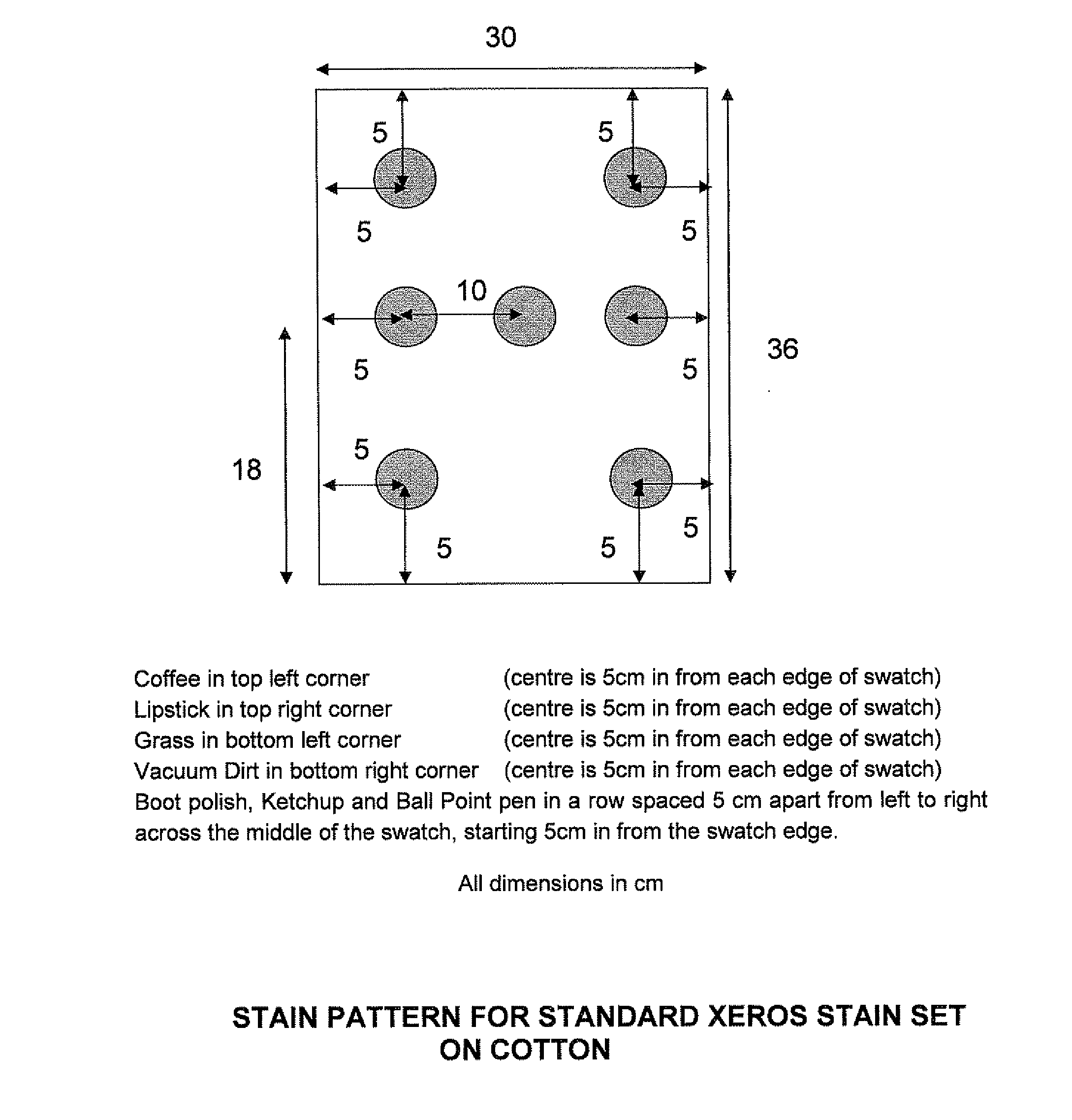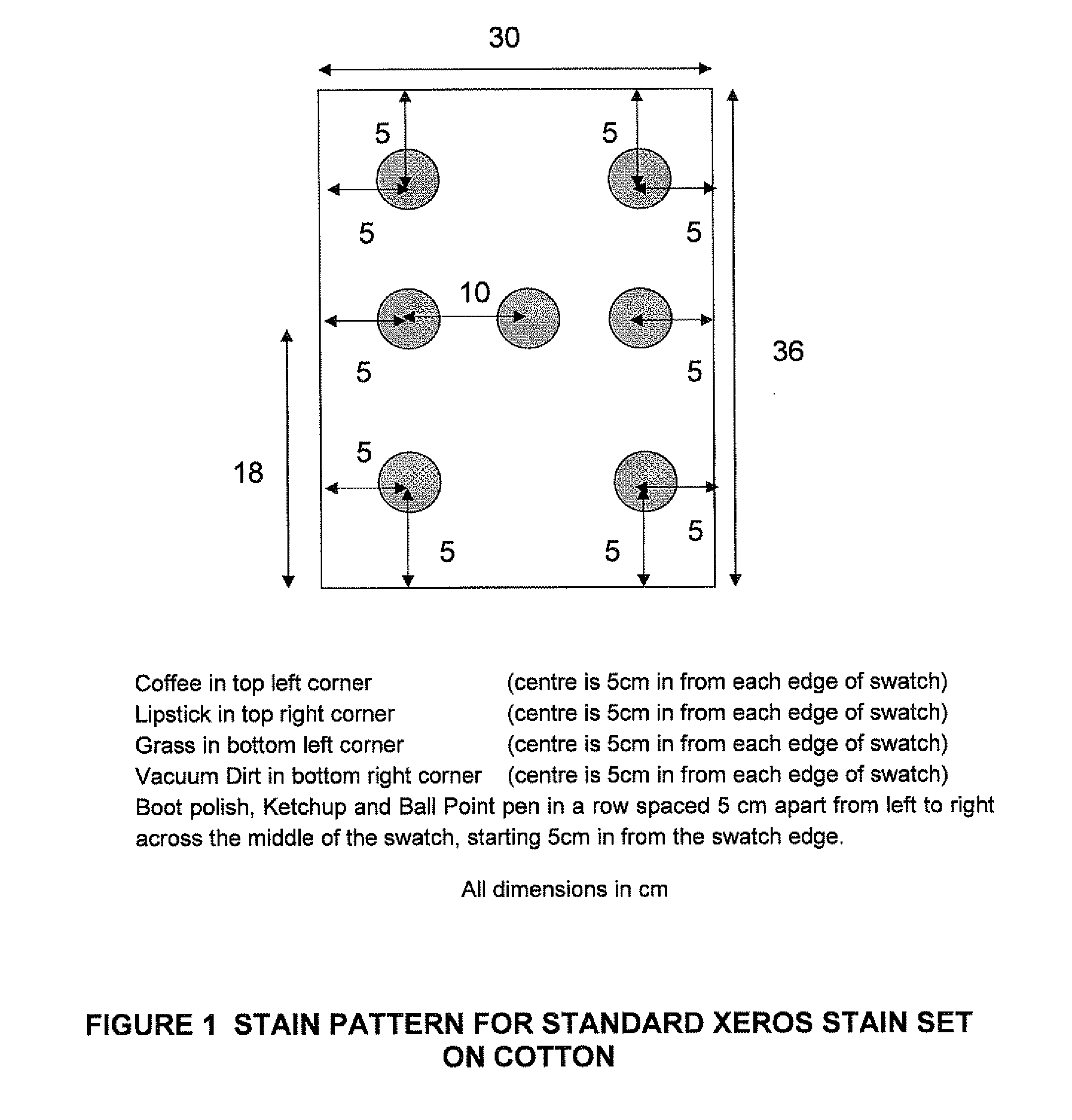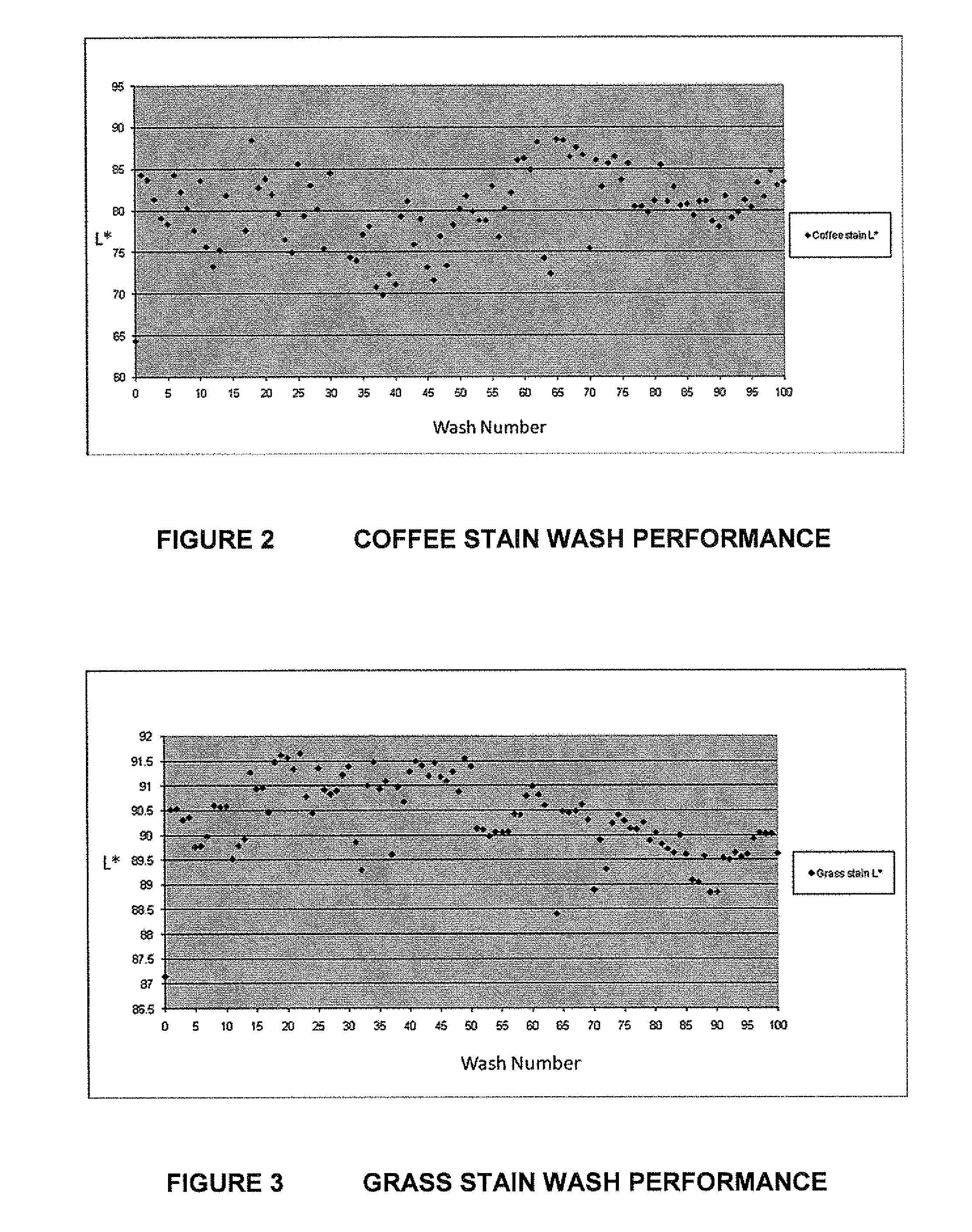Novel cleaning method
a cleaning method and substrate technology, applied in the field of cleaning substrates, can solve the problems of increasing costs, reducing the power of solvent relative to other solvents, and inevitably increasing costs, so as to facilitate the efficient transfer of at least one cleaning material to the substrate, improve the transport properties of the system, and facilitate the removal of soiling and stains from the substrate.
- Summary
- Abstract
- Description
- Claims
- Application Information
AI Technical Summary
Benefits of technology
Problems solved by technology
Method used
Image
Examples
example 1
[0045]Woven cotton fabric (282 gm−2) was stained using coffee and tomato ketchup following the methods described below:
(i) Tomato Ketchup
[0046]Heinz® tomato ketchup was applied to the fabric with a synthetic sponge, within the confines of a 5 cm plastic template; the stained fabric was then dried at 40° C. for 30 minutes, after which the fabric was aged prior to use by storage in the dark for 4 days.
(ii) Coffee
[0047]10 g of ASDA® Smart Price coffee powder was dissolved in 50 ml distilled water at 70° C. A 1 cm3 aliquot of the ensuing solution was applied to the fabric using a synthetic sponge, within the confines of a 5 cm plastic template; the stained fabric was then dried and aged following the procedure described for Tomato Ketchup.
Nylon 6,6 beads measuring approx. 5 mm×5 mm obtained from Invista Textiles (UK) Ltd were employed in the cleaning process.
The stained fabric was pinned to a the cotton coverslip of a 1 kg feather pillow, the latter being supplied by Johnsons Cleaners U...
example 2
[0054]White polyester / cotton ¾ sleeve shirts (Matalan®) were used, which had been stained by the application of vacuum cleaner dirt to the collars and cuffs.
The ballast comprised 2 cotton pillow cases obtained from EMPA Test materials.
Nylon 6,6 (101L NC-010 ZYTEL) beads obtained from Distrupol Ltd were employed in the cleaning operation, together with a detergent which comprised 2 gl−1 Persil® Bio.
Three types of nylon bag were used:[0055]A nylon bag having edges reinforced with double stitching;[0056]a nylon net bag to which fabric tape had been applied to the edges for increased strength;[0057]a fabric bag made from lightweight voile and also Organza.
A Danube commercial tumble dryer, programmed using a PC running EDU Win computer software was employed for the Xeros cleaning cycle (60° C. for 10, 15, 20 or 30 minutes) and venting cycle (10μ, 15 and 20 minutes at 60° C. as well as 20 minutes at 30° C.)
Four shirts, together with cotton ballast (total mass 1 kg) were placed in a 533 mm...
example 3
[0059]Woven cotton fabric (194 g m−2) was stained using coffee and tomato ketchup following the methods described below:
(i) Tomato Ketchup
[0060]Heinz® tomato ketchup was applied to the fabric with a synthetic sponge, within the confines of a 5 cm plastic template; the stained fabric was then dried at 40° C. for 30 minutes after which the fabric was aged prior to use, by storage in the dark for 4 days.
(ii) Coffee
[0061]10 g of ASDA® Smart Price coffee powder was dissolved in 50 ml distilled water at 70° C. A 1 cm3 aliquot of the ensuing solution was applied to the fabric using a synthetic sponge, within the confines of a 5 cm plastic template; the stained fabric was then dried and aged following the procedure recounted for tomato ketchup.
Nylon 6,6 beads measuring approx. 5 mm×5 mm obtained from Invista Textiles (UK) Ltd were employed.
The stained fabrics were placed in a 2000 cm3 capacity polypropylene container, together with distilled water to provide a 1:2 water:fabric ratio and nyl...
PUM
 Login to View More
Login to View More Abstract
Description
Claims
Application Information
 Login to View More
Login to View More - R&D
- Intellectual Property
- Life Sciences
- Materials
- Tech Scout
- Unparalleled Data Quality
- Higher Quality Content
- 60% Fewer Hallucinations
Browse by: Latest US Patents, China's latest patents, Technical Efficacy Thesaurus, Application Domain, Technology Topic, Popular Technical Reports.
© 2025 PatSnap. All rights reserved.Legal|Privacy policy|Modern Slavery Act Transparency Statement|Sitemap|About US| Contact US: help@patsnap.com



